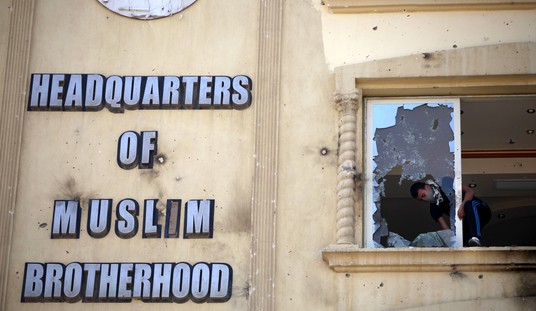In the Middle East these days, things just seem to get more and more surreal by the moment. In the latest installment of "Terror Group Leaders Gone Wild," Hezbollah, not wanting to be suddenly ignored by Western news outlets -- what with Hamas grabbing all the "Islamic terrorist scumbag" media attention -- has announced that they have some Russian-made Yakhont anti-ship missiles with which to threaten the United States Navy.
Hezbollah leader Sayyed Hassan Nasrallah warned Washington last week his group had something in store for the U.S. vessels deployed to the region since war erupted last month between the Palestinian group Hamas and Israel, shaking the wider Middle East.
Two sources in Lebanon familiar with the Iran-backed group's arsenal say he was referring to Hezbollah's greatly enhanced anti-ship missile capabilities, including the Russian-made Yakhont missile with a range of 300 km (186 miles).
Reports by media and analysts have for years indicated that Hezbollah acquired Yakhont missiles in Syria after deploying there more than a decade ago to help President Bashar al-Assad fight a civil war.
Hezbollah has never confirmed possessing the weapon.
The Yakhont is the export version of the Russian P-800 Oniks cruise missile, which carries the NATO identifier SS-N-26 "Strobile." The original version of the missile has been in use with the Russian Navy since 2002. The Yakhont carries a 200kg warhead, downgraded from the Oniks' 300kg one. It also has a ramjet engine and an operational range of no more than 300 kilometers (186 miles), as opposed to the Russian version, which has twice the range.
With these numbers, it would seem that the prudent course of action for the United States Navy's two carrier groups in the eastern Med is simple: Stay more than 186 miles offshore, where the Hezbollah missiles (assuming they are telling the truth about possessing these weapons) cannot reach. But the Navy's F/A-18 Super Hornets most assuredly can reach Hezbollah, should that prove necessary.
This entire phenomenon of Hezbollah's leadership and the habit of their mouths writing checks that their butts can't cash is nothing new. My colleague Jeff Charles penned a great piece last week on the impotent threats served up in a speech by Hezbollah's leader Hassan Nasrallah on Friday, in which he threatened the United States directly.
Hezbollah, while they have the capacity to make themselves a regional nuisance, cannot hope to stand up against the U.S. Navy's two carrier task groups. Each of these groups carries more air power than all the air forces of the Muslim world, along with high-tech sensing platforms and dedicated missile-defense weapons. Our Air Force is surveilling Gaza from 50,000 feet using our aptly named Reaper drones, and while these flights are without weapons, the Reaper is certainly capable of carrying air-to-ground precision munitions. Hezbollah has no ability to counter this. What irregular groups like Hezbollah can do is draw more modern forces into nasty, block-by-block urban combat, where much of the high-tech advantage is neutralized; but the Israel Defense Forces seem to be handling that as well as anyone could expect.
Hezbollah's leadership would do well to acquaint themselves with a little concept we here in the West like to call "reality."














Join the conversation as a VIP Member